The Secret To Foolproof Prospect Qualification
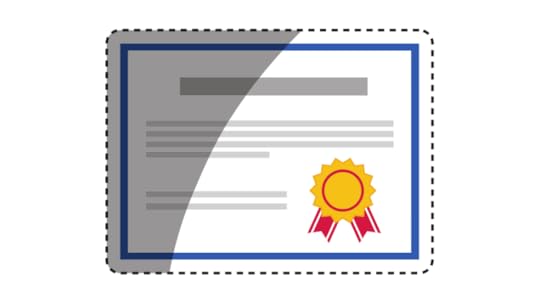
Are You Qualifying The Wrong Prospects? How To Break Your Pipeline Addiction. Selling To The Right Level: Is Your Product Tactical or Strategic? Chasing a Buck Instead of Disqualifying a Prospect What To Do After “We’re Not Interested” BONUS: The Root of Discounting
Are You Qualifying The Wrong Prospects?
When you are prospecting for new leads are you looking for prospects that want to buy a product or service that is like yours? Or, are you searching for prospects that need exactly what you have to sell?
These are two very distinct approaches to business development and yield two very different sets of prospects. And results.
Category Qualification vs Product Qualification
The default for most salespeople is
to approach qualification from the perspective of qualifying the prospect to
buy a product/service that is like theirs, that is similar to theirs. They are
qualifying their leads as prospects for the category of product or service they
are selling. This is called category qualification.
If you pursue a category qualification approach then that means you are more focused on a classic “sales is a numbers game” approach to selling. ‘Let’s fill up the funnel and see how many pop out the bottom.’ This has been the primary method salespeople have used since the beginning of the 20th century. I call it a brute force approach to sales that may yield some results but is wasteful of the seller’s and prospect’s time.
The alternative to category qualification is product qualification. A disciplined product qualification approach says that you are prospecting for customers that need exactly what you have to offer. What is the unique value(s) that your product/service/company provides to a customer? What are the specific features/benefits/services that differentiate your products from your competitor?
As a seller your task then becomes to find prospects whose key decision criteria precisely align with your unique value. This takes more work upfront. It also requires the self-discipline to “catch and release” prospects that don’t measure up to your qualification standards.
But, take a second and imagine what will happen to your sales if your pipeline is composed primarily of prospects that are qualified to buy your specific product or service as opposed to your category of product or service. Provided that you are a responsive seller (or what I call a Zero-Time Seller) the result will be compressed buying cycles, improved sales productivity and more money in your pocket.
Break Your Pipeline Addiction
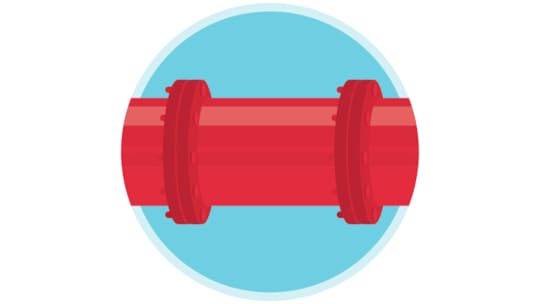
The reason that category qualification is still preferred by salespeople is due to their, and their sales manager’s, unhealthy preoccupation with the size of their pipeline.
Unfortunately for too many sales managers the size of a salesperson’s prospect pipeline is a lazy metric to assess.
In reality it doesn’t tell the manager anything about the likelihood of any of the deals turning into an order.
(Ironically, most sales managers will say it is easier to forecast their numbers if their pipelines are robust when, in fact, the are dissipating tremendous amounts of sales time with unqualified prospects and creating greater uncertainty about their results.)
Obviously it is easier to fill a pipeline with “qualified prospects” if you are less discriminating about the quality of those prospects. But this has a major negative impact on the speed of your selling. It takes too much time to weed out the prospects that are never going to buy from you. That time would be much better spent upfront ensuring that the prospect is qualified to buy precisely what you are selling.
Here are some tips you can employ
to begin breaking your dependence on category qualification, develop a truly
productive pipeline and speed your sales:
1. Re-qualify your current pipeline
Go through your current pipeline and re-qualify every prospect according to a product qualification standard. Remember, that product qualification is not about qualifying the prospect to buy a product that is sort of like yours or somewhat like yours. It is about qualifying the lead as a prospect to buy exactly what you are selling.
This may seem like an onerous task but the alternative is to continue spending more of your limited sales time on prospects that are not going to not buy from you.
2. Be utterly realistic and ruthless
If you believe that a prospect is
strongly leaning towards another solution then that means that you probably
missed something in the qualification stages. It may be that that they are
qualified to buy your competitor’s product but not yours. If that is the case,
don’t cling to the prospect. Not everyone will buy from you. Focus your time
and energies on those that will.
3. Get a head start on the competition
Unless your product or service is
identical to that being offered by the competition, using product qualification
means that you should begin a qualified prospect’s buying process with a
substantial head start on your competition. This translates into shorter buying
cycles and more sales time to close more orders.
Mind The Gap: Selling To The Right Level
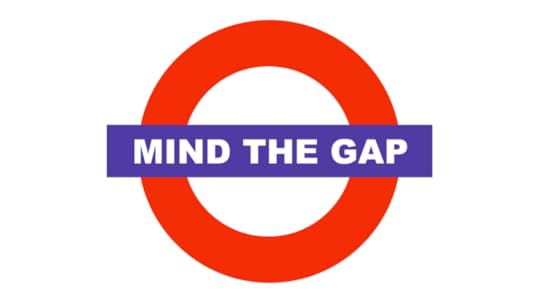
Is Your Product Strategic or Tactical?
I hate to break this to you. But,
for most of you reading this article, the products or services you are selling
are NOT strategic to your customer. This doesn’t mean your product or service
isn’t important. It’s just not strategic. And that dictates how, and to whom,
you should be selling. Understanding the difference is crucial to your ability
to help your prospect move more quickly through their buying process and give
you the order.
For every product and service there is an Actual Decision Maker (ADM), a functional, economic or organizational buyer who really makes the decision which vendor to select. Making an accurate determination of whether your product is strategic or tactical is the first step to defining who the ADM will be. Identifying that person within your prospect’s organization is a key part of the qualification process. (Qualification is a collaborative process and you can’t qualify a prospect with someone who isn’t the decision maker.)
Which is Which?
Examples of strategic products are
major acquisitions or purchases that can affect the direction of a company.
Large capital expenditures for buildings or equipment. Major commitments to
financial institutions. Large sole source volume purchases of critical
inventory. Investments in mission critical systems such as data centers,
network infrastructure and software. Anything that rises to a certain dollar
level relative to the company’s revenues.
Tactical products and services are everything else. A company can’t operate or function without them but the dollar level of the purchase is low relative to the size of the company, the products and services are relatively commoditized and there are multiple vendors from which to choose.
This equally applies to certain raw materials and components to build products as well as consumable supplies and services that companies need to keep the lights on and operate.
As a rule of thumb, decisions on
strategic products are made by ADMs at high levels, or the highest, within your
prospect’s company. Decisions on tactical products can be made a a wide variety
of levels within a company. The consequences of incorrectly identifying the ADM
and mis-characterizing your product or service as strategic vs tactical include
elongated buying cycles as time is wasted selling to the wrong people at the
wrong levels.
In part, this confusion between the strategic and the tactical stems from the sales literature and sales training that claims that the one true path to sales success lies in selling to the C-suite. However, if you blindly follow that advice without first accurately assessing the nature of the product you are selling, then you’re at risk of setting out on a path that will slow down your sales process.
(Even complex software priced and delivered in SaaS models is now often a tactical product/service. I spoke with the VP of Sales of a well-known SaaS vendor at the Sales 2.0 conference in San Francisco. He said the great thing about their business model is that it had compressed their prospects’ buying cycles by largely eliminating the need for C-suite approval for their product.)
Fortunately for you the
overwhelming majority of products and services that are sold are tactical. They
are good products. Even important products. Perhaps products and services just
like yours. Unless you are selling to a very small business where the CEO/owner
makes every single decision, avoid wasting your sales time by insisting that
your path to getting an order requires that you sell your product and service
to the denizens of the C-suite.
Mind The Gap
A useful way to look at this is to envision that there is a time gap between each level of management. This time gap is the additional amount of time it takes for each additional level of management above the Actual Decision Maker to be briefed and add their input to a decision.
In my experience this gap should be estimated to be at least a week in length, though it could be much longer. If there are two levels of management between your Actual Decision Maker (ADM) and the C-level Boss, then you risk injecting a minimum of two additional weeks into your prospect’s buying cycle if you persist in an attempt to involve the Boss in a decision that she was content to leave to her staff.
This creates time for your competitors to get back into the deal. Falling into this time gap puts the brakes on your momentum and injects an element of risk into the sales situation that didn’t exist before.
Let me give you an example.
One of my clients was Marv, the CEO of a small tech company that manufactured an electronics product with a bill of materials that consisted of a couple hundred components. Each one of those components represented a sales opportunity for one or more vendors to supply my client’s needs for the thousands of units they built each year. My client CEO signed off on the purchase requisitions that approved the expenditure for parts but he wasn’t making the decision about which vendor to select for each of those individual components. Those decisions were made by the design engineer, component engineer or manufacturing engineer.
One day a vendor’s salesguy, who
was just about to be given an order, managed to convince his engineering
contact that he absolutely needed to talk to Marv before he got the order. After
all, he had been trained that he needed to sell all the way to the top. He
triumphantly entered Marv’s office. Marv turned to his engineer and asked
“Why are you bringing this to me? I don’t need to be involved.” He
paused. “But now that you’ve brought this to me, I will give my
opinion.” Suddenly the done deal was not so done.
Are You Chasing a Buck Instead of Disqualifying a Prospect?
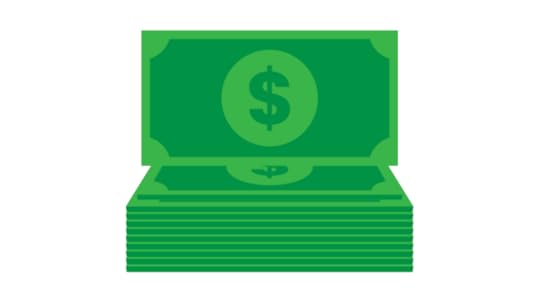
When a potential prospect tells you
that your product is ‘too expensive’ what they usually mean is that your
product is just that, too expensive for their budget. It isn’t an objection. It
is a fact. Sometimes a prospect just can’t afford what you are selling. Even if
they are otherwise a perfect fit for your product or service.
Unfortunately, salespeople are
often too busy chasing a buck to really listen to the customer. They
desperately cling to these so-called prospects, which really aren’t prospects,
because they are loathe to kick any potential buyer to the curb. But, as a
consequence, they skip what should be an essential early step in their sales
process: qualifying the prospect on price.
Price Qualification
There is no mystery to price
qualification. Qualifying a prospect on price means that you reach a
preliminary agreement about the value that the prospect will receive from your
product in exchange for the dollars they are going to pay you. In other words,
you have reached a tentative agreement with the prospect that your price is
proportional to their assessment of your product’s value.
Unfortunately, salespeople have an
unhealthy fear of the price question. They want to keep it in a closet somewhere
and forget about it. It scares them. Like zombies or movies based on Jane
Austen novels. They are afraid that any discussion of price will scare off the
prospect. Which is exactly the point.
The downside to the salesperson of
not qualifying, or disqualifying, a prospect on price is the risk of wasting
their limited and valuable selling time on buyers who will not buy.
When Should You Qualify on Price?
Price qualification’s rightful place is early in the sales process, (but after category/product qualification) during the discovery and qualification phase, because a price objection is a valid reason for you to disqualify a prospect.
First, ask the right questions of the prospect to fully understand their requirements and make sure these are aligned with your value proposition (aka your features, benefits and advantages.)
Then clearly lay out the value, price and the ROI they can expect from your solution based on their stated requirements. If you can’t reach a preliminary agreement with the prospect on your “value for price” at this stage, then you probably need to walk away.
Qualification on price and value
doesn’t mean that your prospect is 100% in love with your price. But it does
mean they agree that you’re in the ballpark and any further discussions of
price will be a negotiation, not handling an objection.
I have four simple rules of thumb about price objections and
price qualification that I have successfully taught to clients and salespeople
over the course of many years.
Qualifying a prospect on price means that you reach a rough agreement with the prospect that your price is proportional to their assessment of your solution’s (product or service) value. In other words, you have reached a preliminary agreement about the value that the prospect will receive for the dollars they are going to pay you. Qualification on price and value doesn’t mean that a prospect is in love with your price. But it does mean you’re in the ballpark and any further discussions of price will become a negotiation, not handling an objection.
A price objection is a valid reason to disqualify a prospect and must take place early in the sales process. A true price objection from your prospect late in the sales cycle means that you misplaced your backbone at the moment of truth and didn’t disqualify them when you had the opportunity. They were never a true prospect for your product or service and you just wasted a lot of time with someone who was never going to buy from you.
Be direct with the prospect about your pricing. Salespeople have developed an unhealthy fear of the price question. They want to put it in a closet somewhere and forget about it. It scares them. Like zombies or movies based on Jane Austen novels. There is no mystery to qualifying on price. The shortest distance between two points is a straight line. Do what you do best. Ask the right questions of the customer to understand their requirements and make sure they are aligned with your features and specs. And then talk price and value based on their requirements.
You can’t have a price objection from a truly qualified prospect. As discussed in #1 above, an intrinsic part of prospect qualification is a rough agreement on price and value. If the prospect is still pushing back on price but wants to move forward with you in their buying process then you should beware. It is possible the buyer has a hidden agenda and is using you in order to advance it. I remember one very large deal I worked on where the prospect kept my company in the deal even though they kept whining about our price. We were confident in our solution so we constructively responded to his pricing concerns. But then it reached a point where it became obvious that he was just using us as a leverage point to negotiate a better deal with our competition. It was a painful lesson learned.
This begs then the central
question: can you get a price objection from a truly qualified prospect?
‘Dude, that’s not a qualified prospect.’
A true price objection surfaced by your prospect at the end stages of the sales cycle usually means one of two things:
A) you misplaced your backbone at the moment of truth and didn’t disqualify them when you had the opportunity, or
B) you didn’t fully disclose your price during qualification.
If it is A, then they were never a true prospect for your product or service and you wasted your valuable sales time on someone who was never going to buy from you. If the answer is B, then you misled the prospect about your value proposition and it will be difficult to rebuild your credibility with the prospect and win the order.
Finally, a warning. If you do a good job of qualifying the prospect on price, but they keep pushing back on price while ostensibly still moving forward with you in their buying process, then you should proceed with caution. It is possible the buyer has a hidden agenda and is using you in order to advance it. I remember one very large deal, early in my career, where the prospect kept raising price objections even though I had carefully qualified them.
Unfortunately, I was inexperienced and made the mistake of responding to these objections. I didn’t have the experience to understand that the prospect was using me as a leverage point to negotiate a better deal with the competition. It was a painful lesson learned.
What to Do After ‘We’re Not Interested”
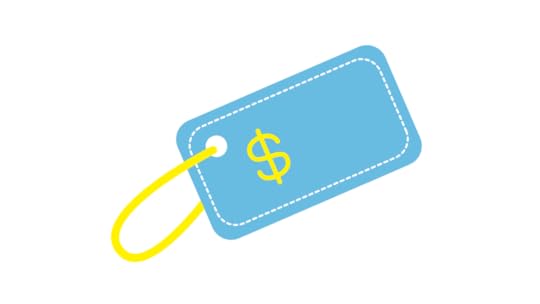
Anyone who has ever sold for a
living has encountered the following situation. You’re talking for the first
time to Larry, a decision maker at ACME Tech, a company that you feel could
potentially be a fit for your product or service. But almost before you get two
words out of your mouth, Larry shuts you down by saying one of three things:
“We already have a supplier.”
“We’re not in the market right now.”
“We’re not interested.”
Many sales trainers would have you
believe that this response from your “pre-prospect,” is merely an
objection that can be overcome with the appropriate salesmanship. Not
interested? No problem. Not in the market? No problem. Already have a supplier?
No problem.
Well, actually, there is a problem.
The problem is the reluctance of salespeople to walk away from a potential
prospect that doesn’t want to become a prospect. Statements of disinterest are
usually statements of fact, not objections. There are always exceptions to the
rule but in general people mean what they say.
In my consulting and speaking work
I am frequently asked the “What should I do when people say they’re not
interested?” question by sales people. For my response, I harken back to
my first boss in sales, Ray. He had the best, and simplest, answer to this
question: “Go find someone who is (interested.)”
If you would like to be more
methodical and analytical about how to respond to these statements from a
potential prospect then you need to ask yourself two tough self-directed
questions and be sure to give yourself completely honest answers.
Self-Directed Question #1:
Is this customer a great fit for our product or service? Not a good fit, but a great fit. Do they fit the profile your company has established for the target customer for your product?
Self-Directed Question #2:
Is the solution I’m selling clearly superior to the alternatives the customer is already using or could acquire in the near term? Set aside your corporate loyalty for a minute and give an honest answer here.
Simply put, would this company be
substantially better off if they adopted your product or service? And,
secondly, are you better than the other guys? In similar situations, with
similar customers, have you reliably beaten the competition?
If you answer either question
incorrectly, you run the very real risk of investing your most precious and
limited resource, your selling time, in the pursuit of a customer who will
never buy from you. Think of all the other sales opportunities you’ll have to
forgo in order to work on this one.
These are not easy questions for
most salespeople to answer. Sales professionals typically are confident people
and thrill to the challenge of the chase. They would like to believe a) that
the solution they sell is superior to all of the others, and if it isn’t, b)
they are such great salespeople they can convince the customer to engage
anyway. However, we all know that isn’t the case. This is a risky bet. As the
old expression goes, there are horses for courses. Sometimes, the horse isn’t
yours.
What should you do after “We’re not interested?” Find a prospect that is interested and worth the investment of your time. Remember that, as a salesperson, the biggest constraint you face in selling is the limited amount of time you possess to sell. Squander your sales time trying to convince a reluctant “pre-prospect” to talk with you and you will find yourself short of time to develop the real prospects that will ultimately buy from you.
BONUS: Surplus is at the Root of Discounting
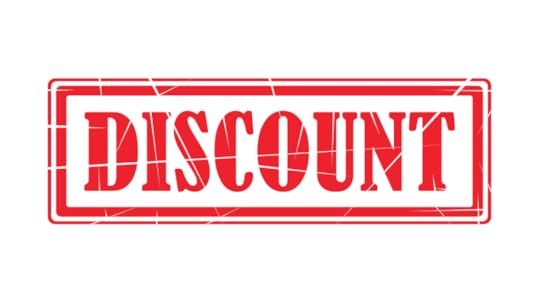
It is easy to blame the salespeople for rampant discounting but it has always been my experience that the primary responsibility for over-zealous discounting and the resulting price and margin erosion rests with management.
When a manager has a surplus, whether of inventory or of salespeople not hitting their numbers (meaning that he or she isn’t hitting their number either), they look for a solution in the form of a discount. Approach the end of the month or quarter with too much inventory on the shelves or too many people not hitting their quota, and the first thing many managers do is authorize their salespeople to offer a discount to a customer to win an order and move some product.
All parties involved in a sales transaction, buyer and seller, are familiar with this cause and effect scenario. Salespeople wait for it. Customers wait for it. It is not an accident that the trajectory of orders during a quarter traces the familiar hockey stick shape. Everyone is familiar with the rules and is in on the game.
The problem with this end of period discounting is that these “one-time” discounts have a tendency to morph into the new default price point for your customer. If you’re handing out discounts at the end of a quarter to induce customers to close an order or accelerate a delivery, then your next order from that customer is going to be at the new price point you established with the discount. Balk at that and you’ll find that all your orders from customers will start to materialize around the end of your accounting periods.
Surplus is also a key factor in discounting conducted by salespeople. It occurs because salespeople oversell their product or service, in effect offering more features than what the prospect needs to meet their needs. This overselling occurs when salespeople are not adept at precisely qualifying their prospect’s exact requirements. A salesperson can’t sell value if they don’t understand the problem the customer is trying to solve. As a consequence, they tend to sell the entire feature set of their product or service in the hope of encompassing the prospect’s needs in the process.
When a salesperson’s offer exceeds the needs of the customer they are left with the choice of reducing either the scope of their offer or their price in an attempt to win the order. Offering surplus features that are without value to the customer almost always leads to a discount.
As a manager, to effectively address this discounting problem you need to develop a plan to reduce the surplus factors in your selling. First, the answer for salespeople who oversell is ongoing in-depth product training. Learning to sell value is next to impossible without a true understanding of your product or service. A rule of thumb is that a salesperson can’t effectively sell value if they don’t understand their product better than the prospect. Does your training accomplish that?
The second surplus factor to manage is the end-of-quarter discounting syndrome. This is a hard habit for management to break. Unfortunately going cold-turkey is the only effective method to curtail the practice. It could take one or two challenging quarters to flush the temptation out of your system and re-train your salespeople, prospects and customers. However, you will learn which customers are buying your product for the value versus the discount. These are the customers to focus on in the future.
The post The Secret To Foolproof Prospect Qualification appeared first on Andy Paul.
Andy Paul's Blog
- Andy Paul's profile
- 4 followers



